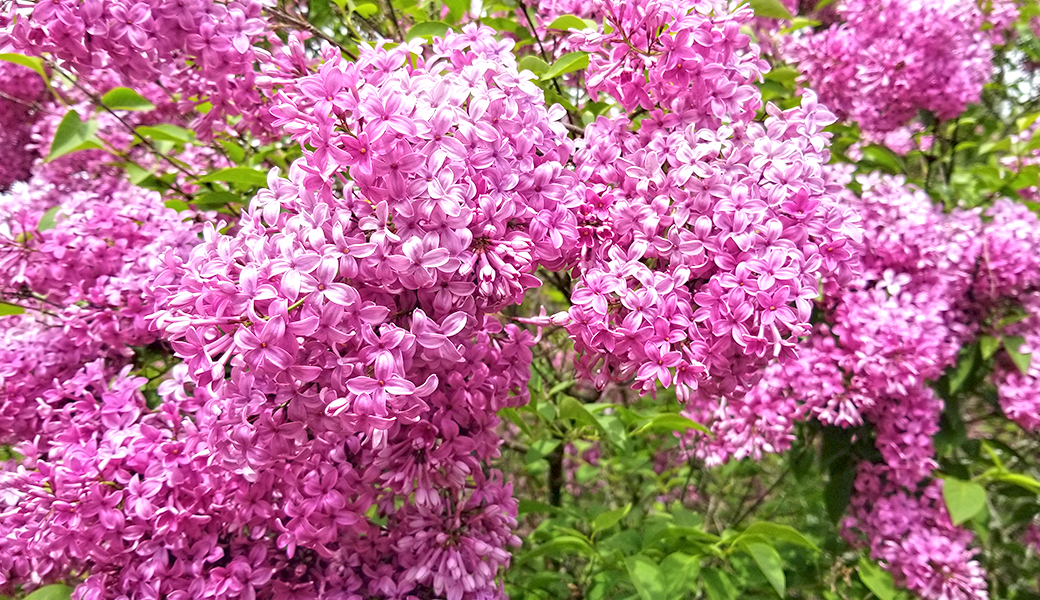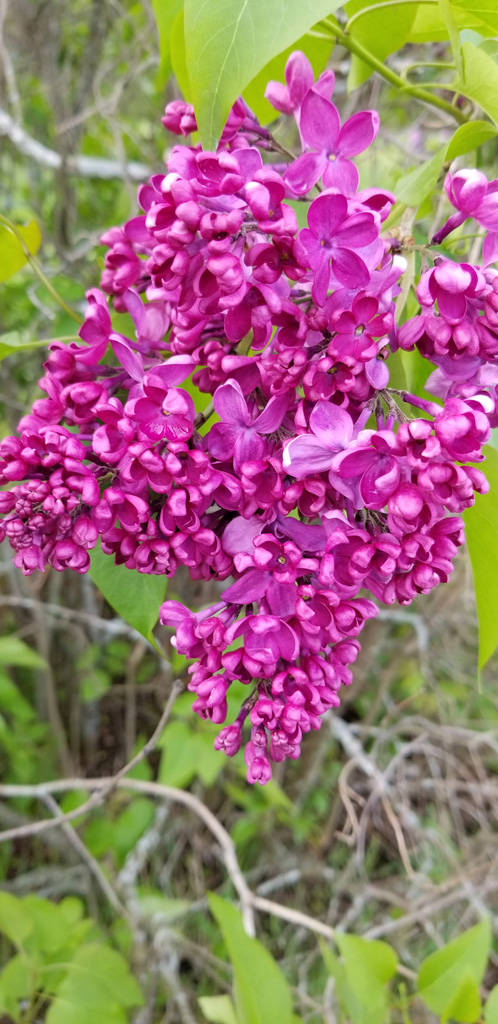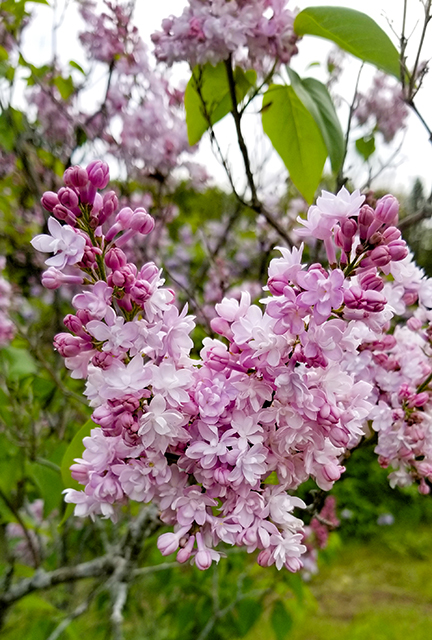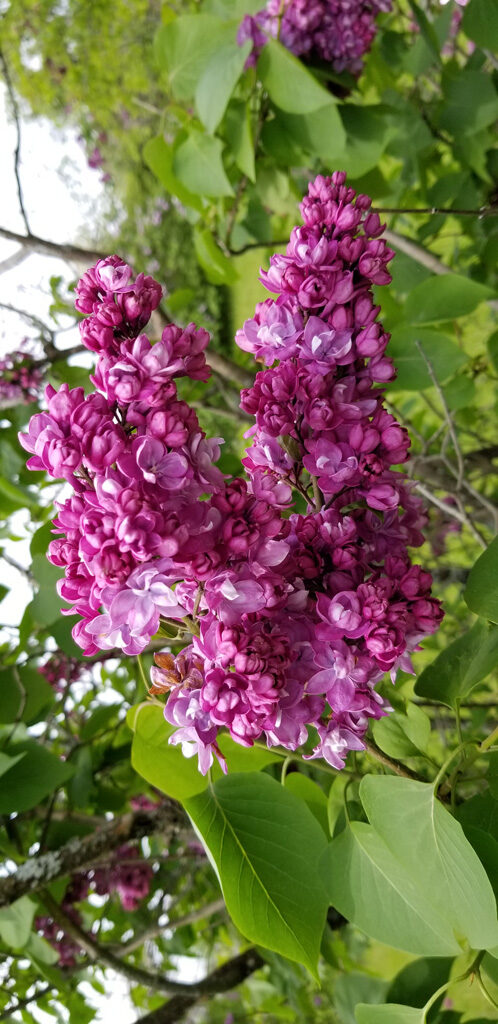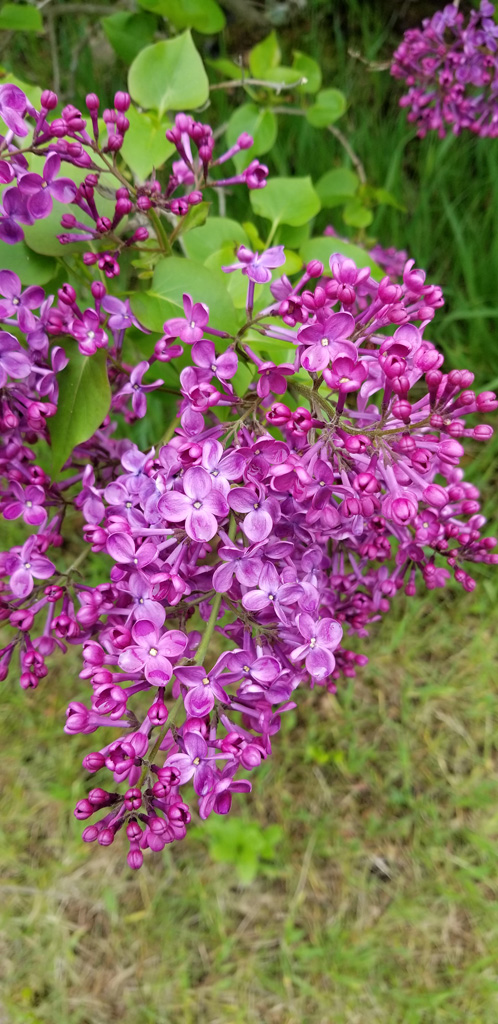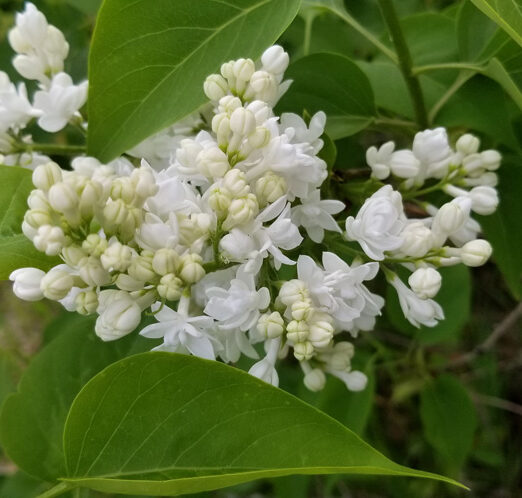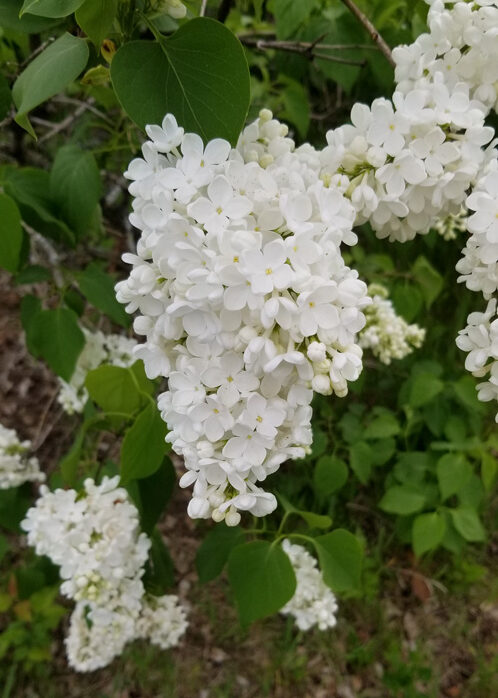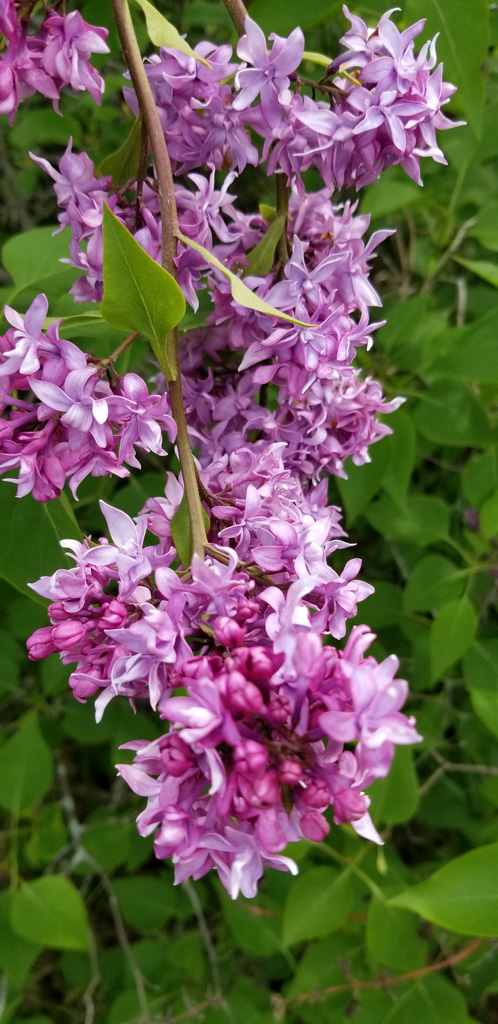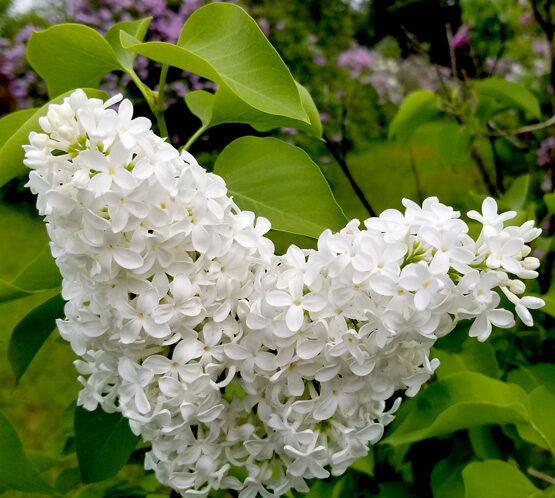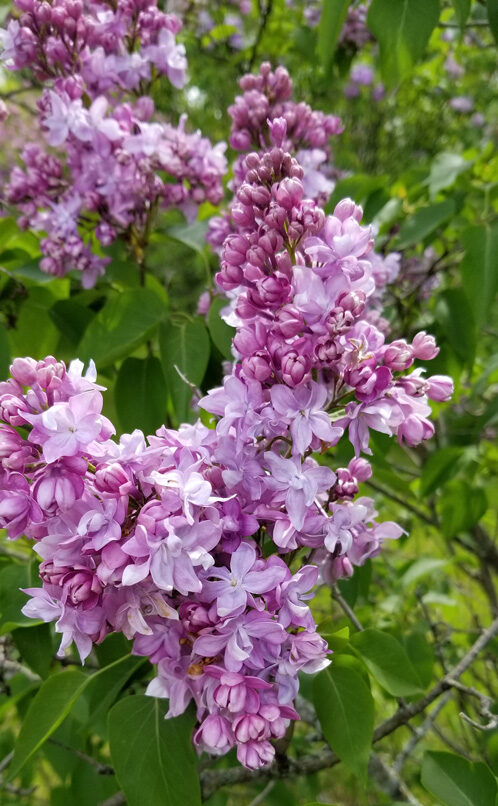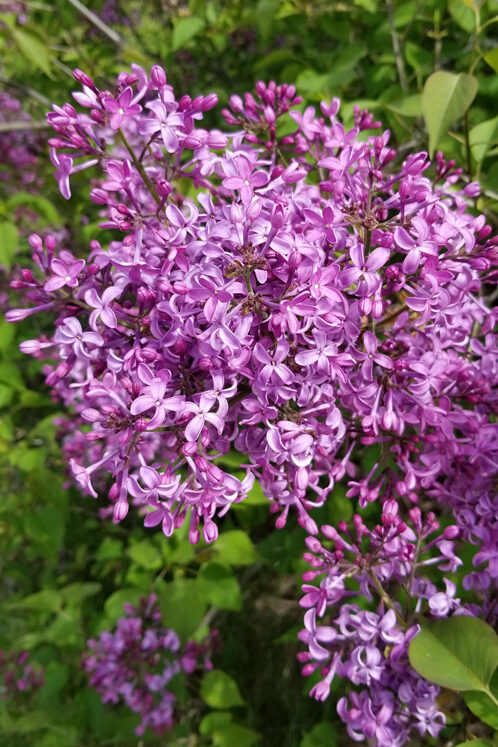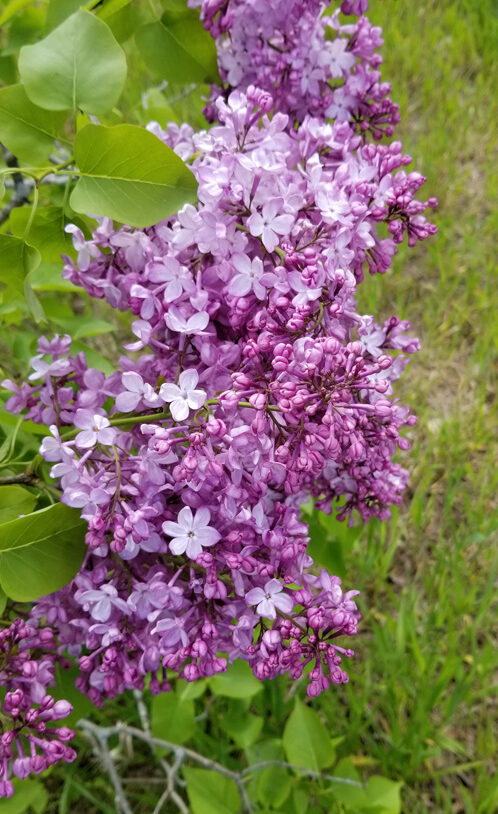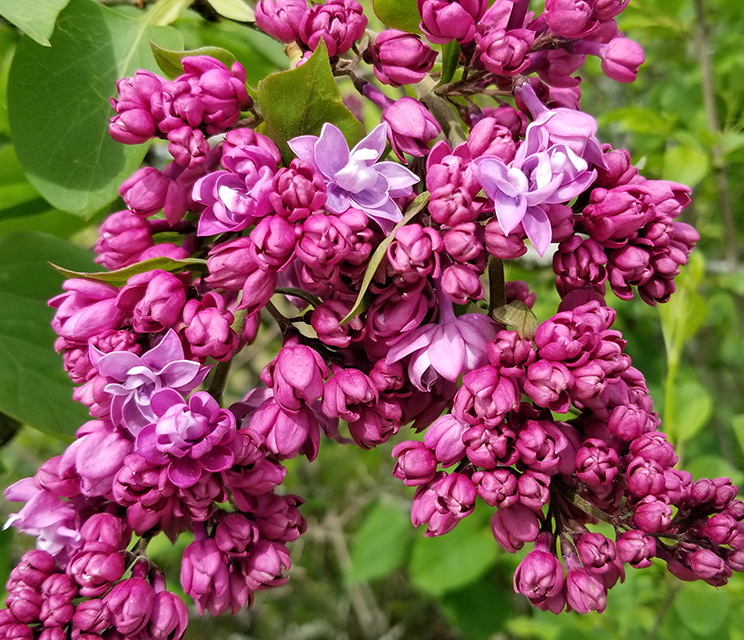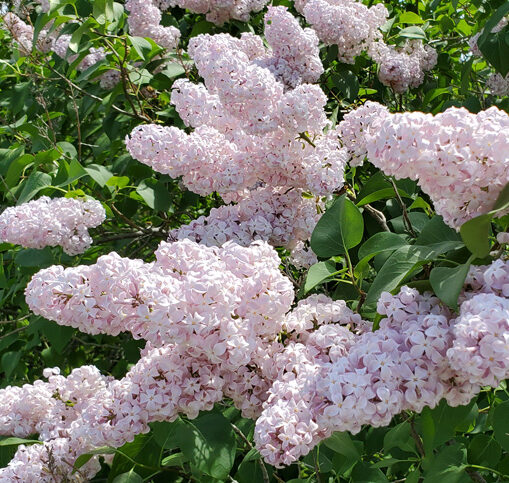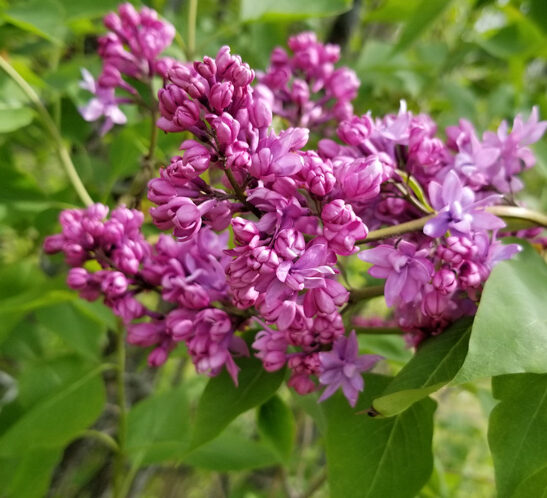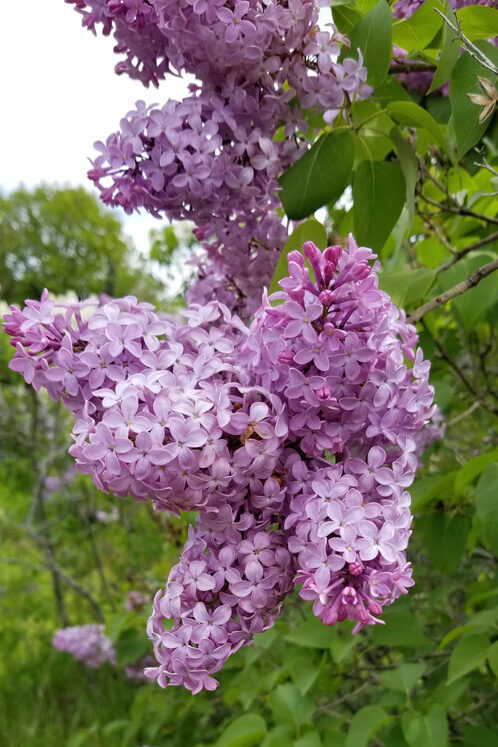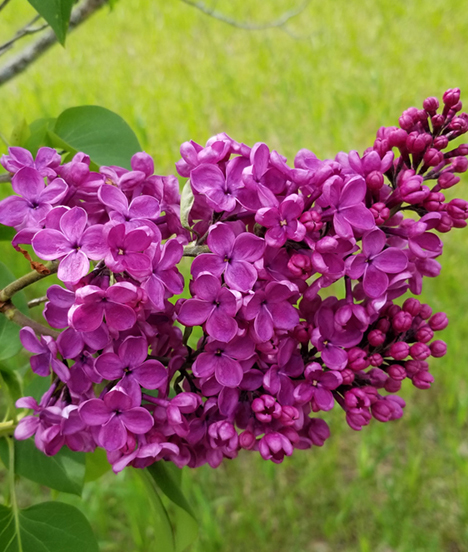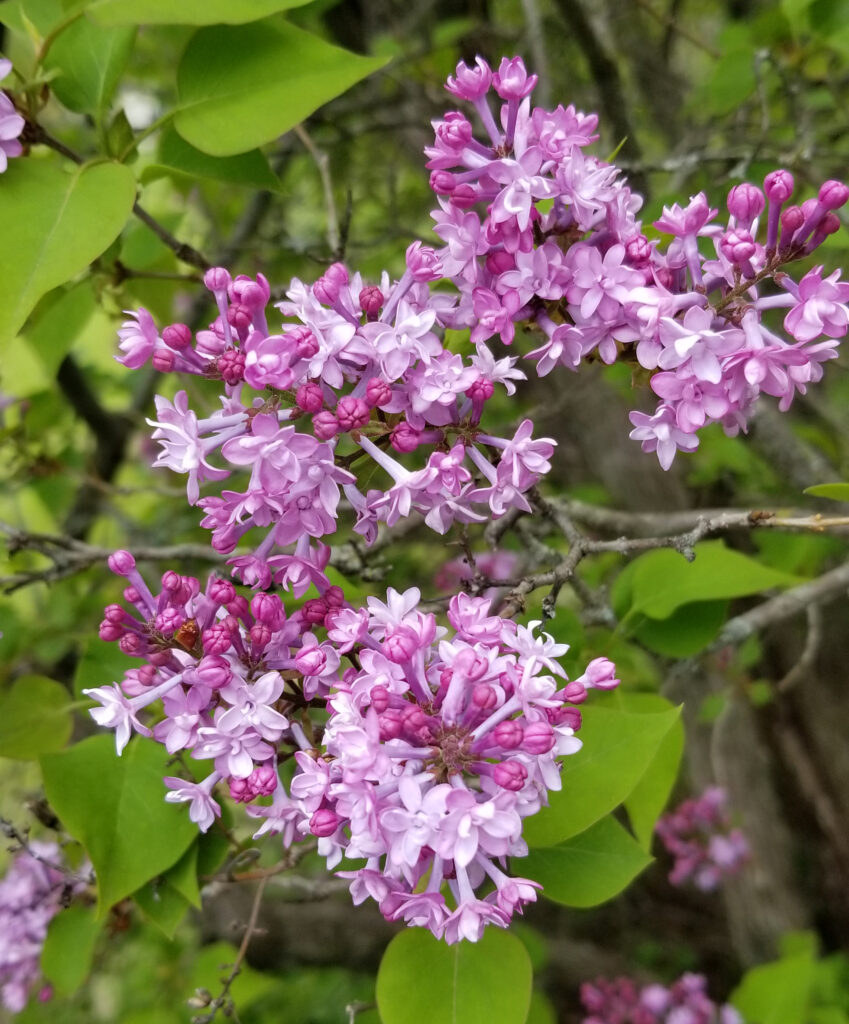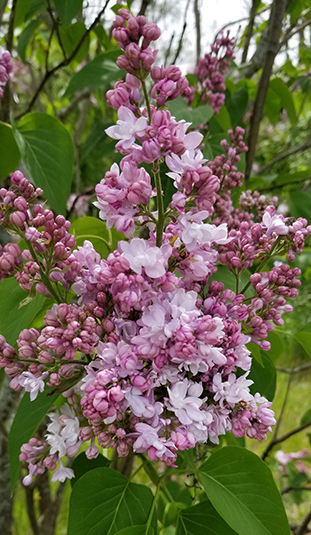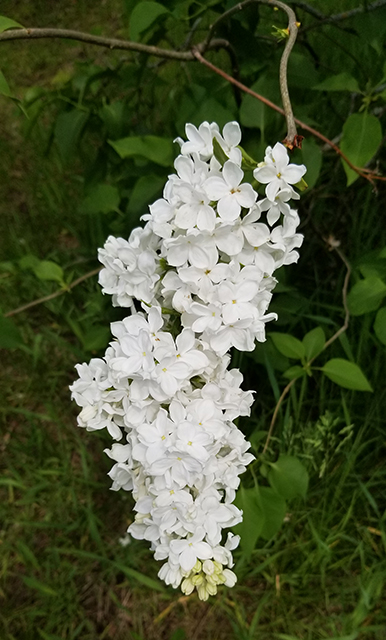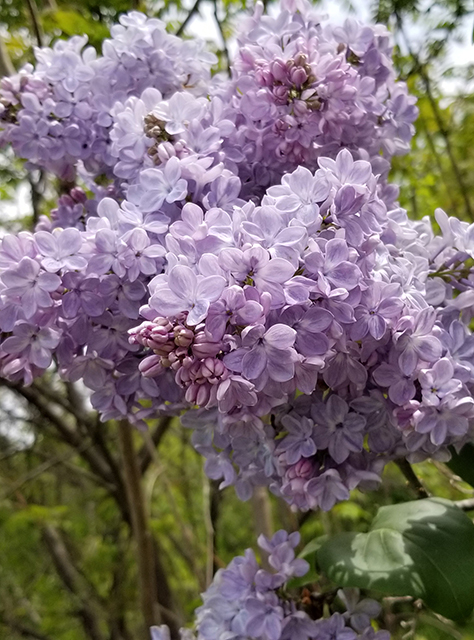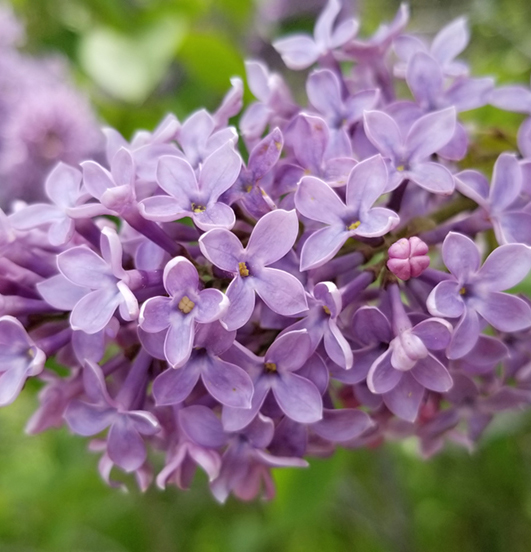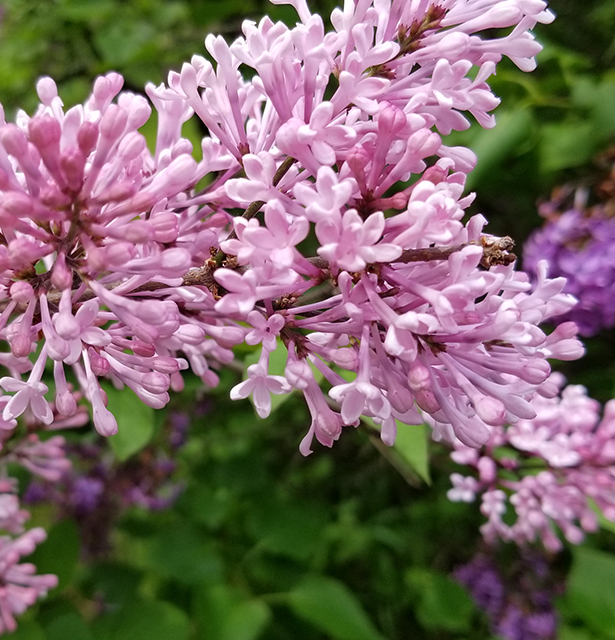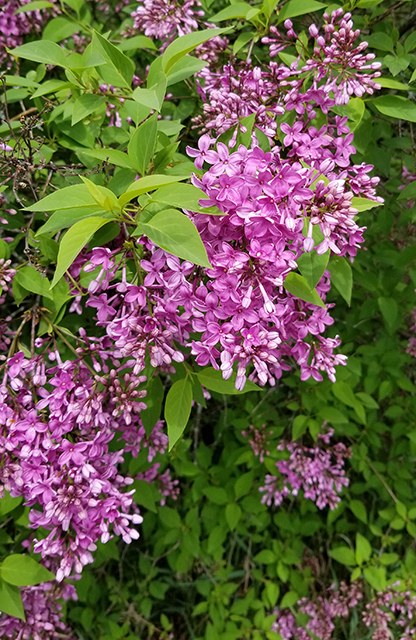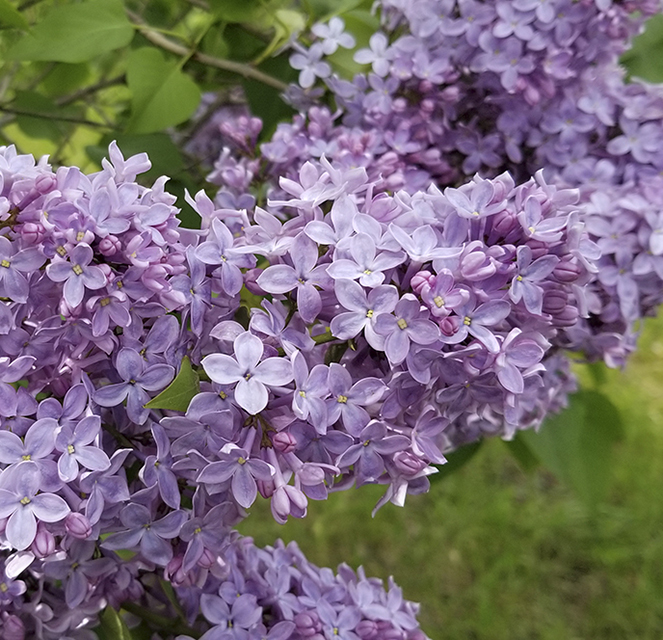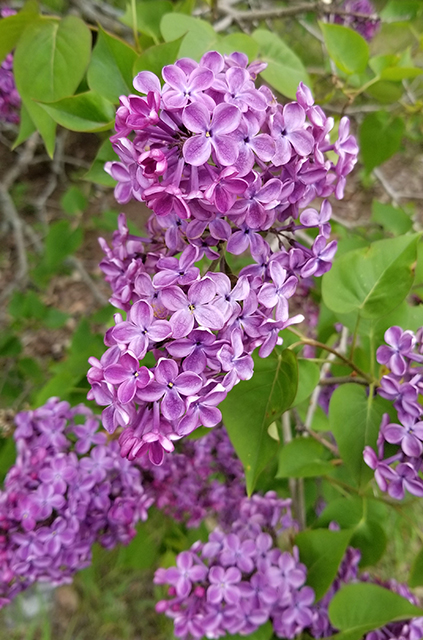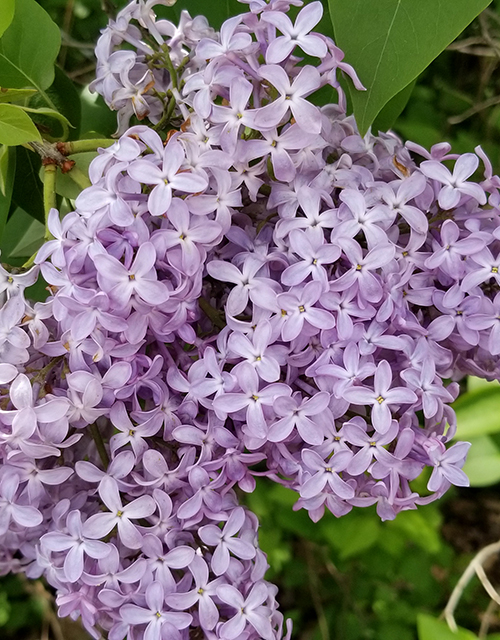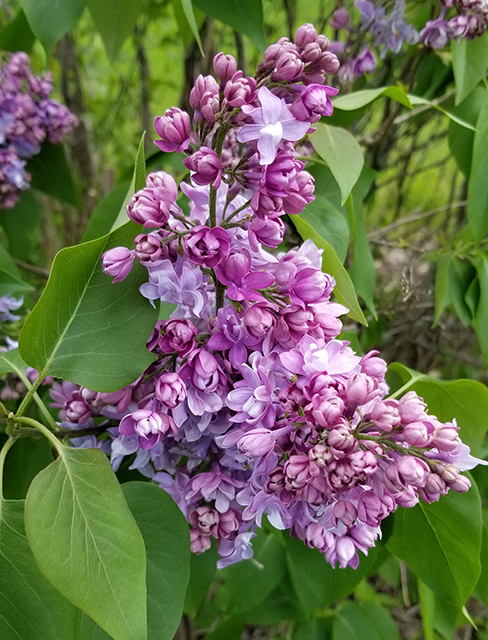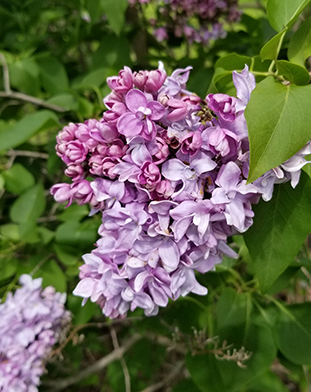Lilacs
In 1996, Professor Norman Pellett wrote a history of the Horticultural Farm. This description of the lilacs is from that history:
The first lilacs were planted in 1952. Two rows were established in the same location where they are in 1996 on the west side of the collection. Some reportedly came from a dismantled lilac collection at an estate. Correct nomenclature for many of these early plants is missing.
Professor Flint and Dennis Bruckel planted many new cultivars in the 1960’s. Many came from Professor Owen Rogers, horticulturist at the University of New Hampshire, and from Phil Hodgdon, a nurseryman and instructor at Vermont Technical College in Randolph Center, Vermont.Late flowering species and hybrids were added in the 1970’s by Bruckel and Professor Pellett. The Friends of the Hort. Farm started a pruning effort to rejuvenate the lilacs in the mid-1990’s. Pruning, fertilization and scale insect control have gradually improved the health of the collection since 1994.
The lilac collection grew to about 160 plants, but today there are about 95 plants left. Witches broom and invasives have strangled and destroyed many of the lilacs, leaving huge gaps in the four main rows. In 2007, curator Jeff Young planted 9 more donated lilacs as Row 5, which we believe are east of row 4 on the other side of the drive path.
After years as dedicated lilac curator, in 2018, Jeff Young retired. Kitty Werner was asked to become the lilac curator and join the Board of the Friends of the Hort Farm.
However, the lilacs are overrun by invading sumac, and it is unclear what their proper names are and how many are left. Several were uncovered by Jim Hayden in 2020 during an invasive workday as he chainsawed much of the sumac from around the lilacs.
In 2019, an invasives plan was started with the State of Vermont Department of Forests, Parks and Recreation. It is a 5-year plan in progress, stalled in 2020 by the pandemic.
Work in Progress
With the help of several board members and volunteers, the lilacs are slowly being uncovered from the invasion of bittersweet and grapevines, as well as the occasional oak, crabapple, black locust, or sumac finding their way within lilacs. In 2021, volunteers spent hours, over the summer and fall, clearing out invasives, an all-out attack pulling out vines and sawing down invading trees. The row 5 lilacs were freed from the sumac. Compost was added to half the collection before we ran out.
In 2021, much of the sumac and invasive plants east of the lilacs and around the Golden Rain Tree have been cut down, and are in process of eradicating. However, they grow back quickly and need repeated removal.
A new ‘Donald Wyman’ was planted in the place of the former remains of the long deceased plant. Find it as the third plant from the north in row 2. Mark Twery donated a ‘Beauty of Moscow’ that was planted October 1st. In 2022, a President Grevy was donated and planted just after the new Beauty of Moscow in Row 2. But, sadly we lost our Dr. Masters lilac. The invasive bittersweet finally won. See our newsletter under the NEWS page.
Our aim is to bring back the lilacs to their prime and rescue many of our rare lilacs. Our work continues.
Download the PDF of the lilacs, at least the ones we have identified.
Download Jeff Young’s lilac care instructions and best lilacs for what season
Lilac preservation mixture for cut lilacs
The lilac is not meant to be used in a bouquet but if you want to keep them from wilting use this recipe
2 tbsp Lemon juice
1tbsp sugar
1/4 tsp bleach
1 quart of H2O
Make sure the bottom of the stem is split a bit for it to absorb the mixture.
Curator, Kitty Werner
‘Adelaide Dunbar’
‘Alphonse Lavallée’
‘Ambroise Verschaffelt’
‘Anton an Ludwig Spath’
‘Asessippi’ (S. x hyacinthiflora)
‘Atheline Wilbur’
‘Avalanche’
‘Beauty of Moscow’
‘Belle de Nancy’
‘Blueâtre’
‘California Rose’
Capitaine Baltet’
‘Charles Joly’
‘Cheyenne’
S. x chinensis (S. protolaciniata × S. vulgaris)
‘Christophe Colomb’
‘Congo’
‘Donald Wyman’
‘Dr Lindley’
‘Edith Cavell’
‘Edward Gardner’
‘Evangeline’ (S. x hyacinthiflora)
‘Excel’ (S. x hyacinthiflora)
‘Firmament’
‘Frank Klager’
‘Fürst Liechtenstein’
‘Guinevere’
‘Hermann Eilers’
‘Hiawatha’ (S. x prestoniae)
‘Jacques Callot
‘Jean Macé’
Josee Reblooming
‘Jules Ferry’
Laciniata
‘Lavaliensis’
‘Le Gaulois’
‘Leon Gambetta’
‘Lilac Sunday’
‘Lucie Baltet’
‘Lutèce’
‘Macrostachya’
‘Maidens Blush’ (S. x hyacinthiflora)
‘Marie Frances’
‘Marie Legraye’
‘Marlyensis’
S. meyeri
‘Mirabeau’
‘Miss Ellen Willmott’
‘Miss Kim’ (S. pubescens subsp. patula)
‘Mme Antoine Buchner’
‘Mme Florent Stepman’
‘Mme Lemoine’
‘Monge’
‘Montaigne’
‘Mrs Watson Webb’
‘Necker’
PI 23032
‘Palibin’ (S. meyeri)
‘Paul Thirion’
pinnatifolia
‘Pocahontas’ (S. x hyacinthiflora)
‘Prairie Petite’
‘President Grevy’
‘President Lincoln’
‘Princesse Marie’
‘Rene Jarry-Desloges’
‘Red Rothomagensis’
S18-96
S. x skinneri
‘Saturnale’
‘Sensation’
swegenzowii
‘Victor Lemoine’
‘Waldeck Rosseau’
‘Wolffi’
